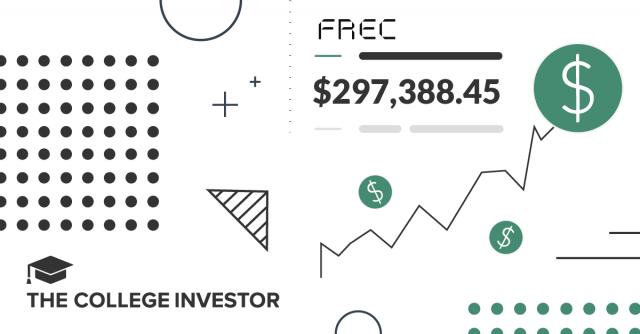Direct indexing is generally meant for high-net-worth investors looking to maximize Tax Loss Harvesting benefits, but Frec makes it available to a larger audience at a relatively low management fee. We explore Frec direct indexing to help you determine if it could make sense for your portfolio.
Quick Summary
- Frec offers direct indexing for portfolios as low as $20,000
- Frec costs 0.10% per year, less than many robo-advisors and ETFs
- Choose popular indices like the S&P 500 and customize investments to your goals
Frec Details | |
|---|---|
Product Name | Frec Direct Indexing |
Minimum Investment | $20,000 |
Pricing | 0.10% |
Tax Loss Harvesting | Yes |
Promotions | None |
What Is Frec?
San Francisco based Frec was founded in 2021. After two years of development, it became available to the general public in October 2023. It’s a VC-backed startup focused on active direct indexing for accounts with at least $20,000 invested.
The company is a registered financial services provider with the SEC and FINRA and acts in a fiduciary capacity. Behind the scenes, accounts are held by Apex Clearing, a huge provider of backend investment accounts. Funds are SIPC insured.
What Does It Offer?
Here’s a closer look at what you can expect with a Frec account.
Direct Indexing Accounts
Frec offers direct indexing-enabled accounts. You can pick from a list of S&P indices, such as the S&P 500 and S&P 500 Technology Index. Once you choose your index, you can exclude specific stocks or add other stocks to create a more personalized version of the underlying fund.
Advanced Tax Loss Harvesting
Direct allows for more fine-tuned tax loss harvesting than traditional index ETFs or mutual funds. With tax loss harvesting, stocks are bought and sold more frequently to take advantage of the ups and downs of the market, locking in investment losses to offset future investment gains.
Because direct indexing involves owning dozens or hundreds of stocks, it was formerly available only to high-net-worth households able to build huge portfolios. Thanks to fractional share ownership and Frec's technology, you can invest with balances as low as $20,000.
According to Frec, "Daily tax loss harvesting can capture up to $19 in incremental tax savings for every $100 deposited and tack on an incremental 2% per year.”
Portfolio Line Of Credit
You can access a portfolio line of credit if you have cash in a portfolio and want to leverage the balance without selling. We can't recommend borrowing against portfolio assets, but it’s an option if you want it.
Are There Any Fees?
Unlike many other fintech startups, Frec is transparent about fees. It charges a yearly
0.10% fee based on assets under management (AUM). That’s less than most robo-advisors and many index fund ETFs charge. There are no additional fees to trade stocks or ETFs aside from the SEC-imposed fees you would pay with any brokerage.
You could pay additional fees for buying or selling mutual funds, but that goes against the general idea of index investing with Frec, so you’re unlikely to encounter them.
Other fees include a treasury management fee for cash balances, interest charges for the portfolio line of credit, and other less common charges.
How Does Frec Compare?
Frec’s competitors include robo-advisors, online brokerages, and other direct indexing investment platforms. Some top competitors include:
Large Brokerage Firms
Large investment companies like Fidelity and Charles Schwab offer direct indexing products. Large brokerage firms offer one-size-fits-all versions of direct indexing, with fully managed portfolios as the primary option.
Robo-Advisors
In many cases, robo-advising platforms are already optimized for tax loss harvesting, so adding a direct indexing product makes sense. Wealthfront is an example of a robo-advisor that offers direct indexing. It requires a portfolio of at least $100,000 for direct indexing, five times the minimum with Frec. Wealthfront charges 2.5 times more than Frec, with a 0.25% annual fee. Betterment is similar to Wealthfront, but while they offer tax loss harvesting, they do not offer direct indexing.
Header | |||
|---|---|---|---|
Rating |
This post first appeared on The College Investor | Investing And Student Loan, please read the originial post: here

